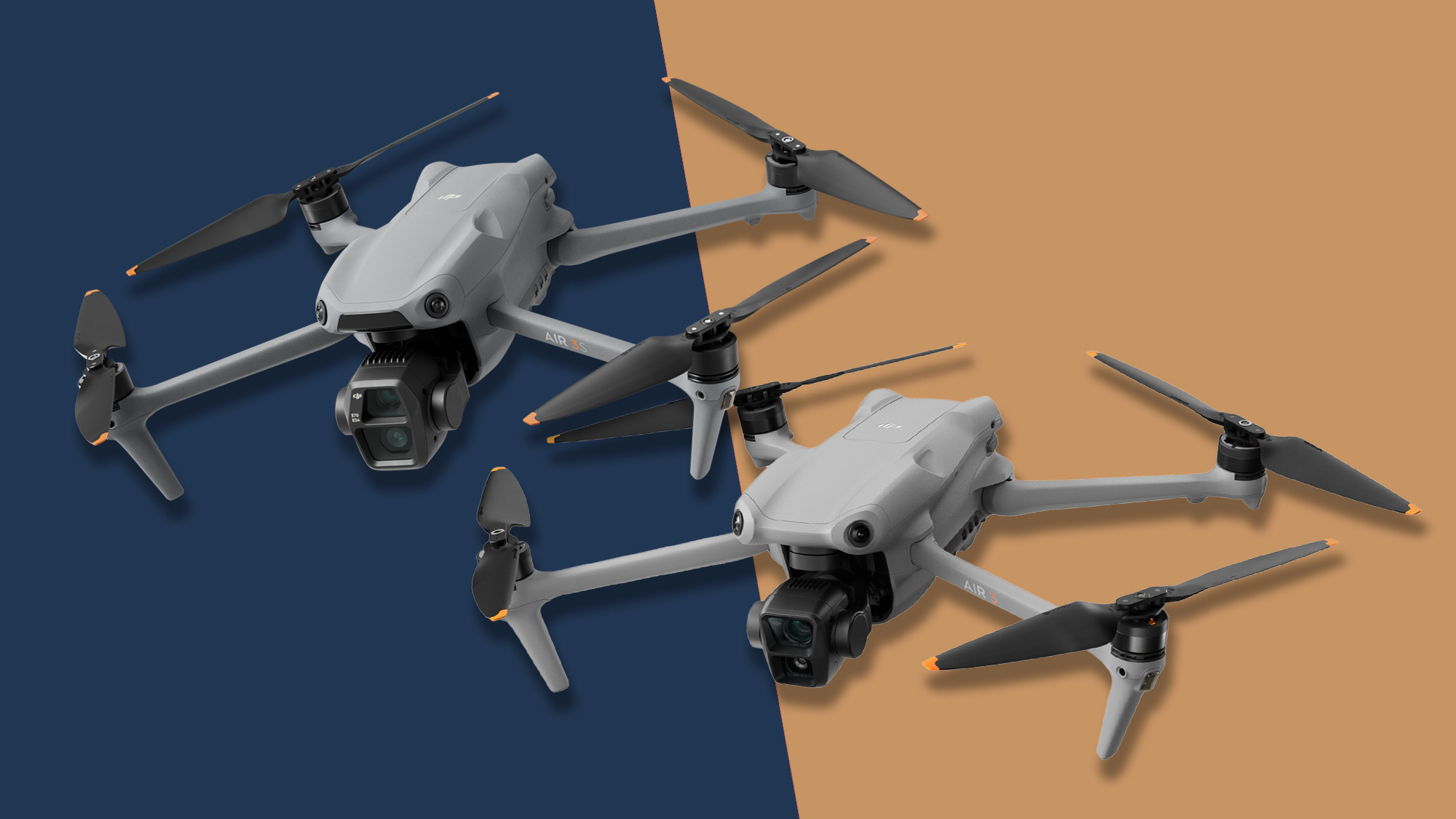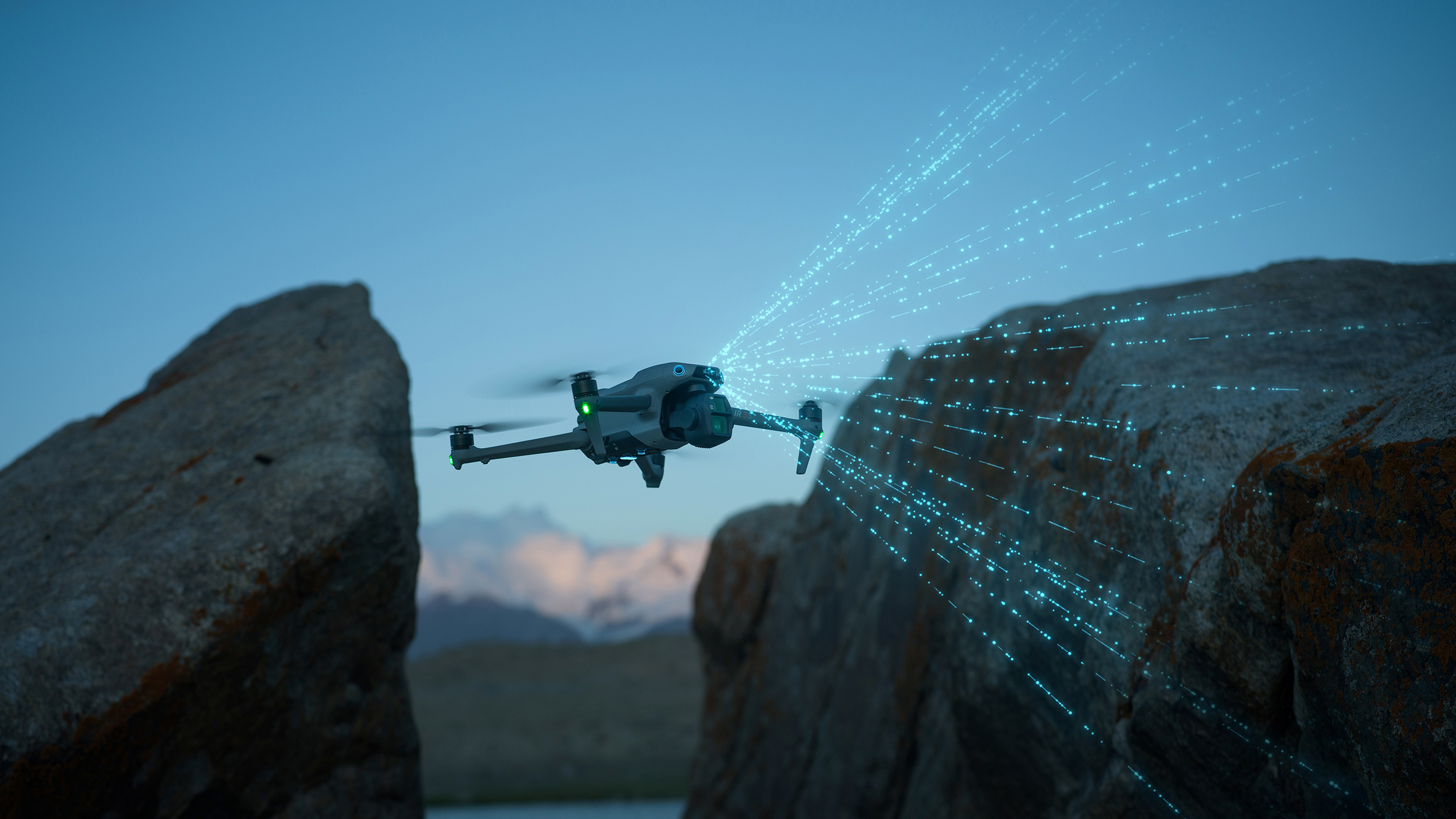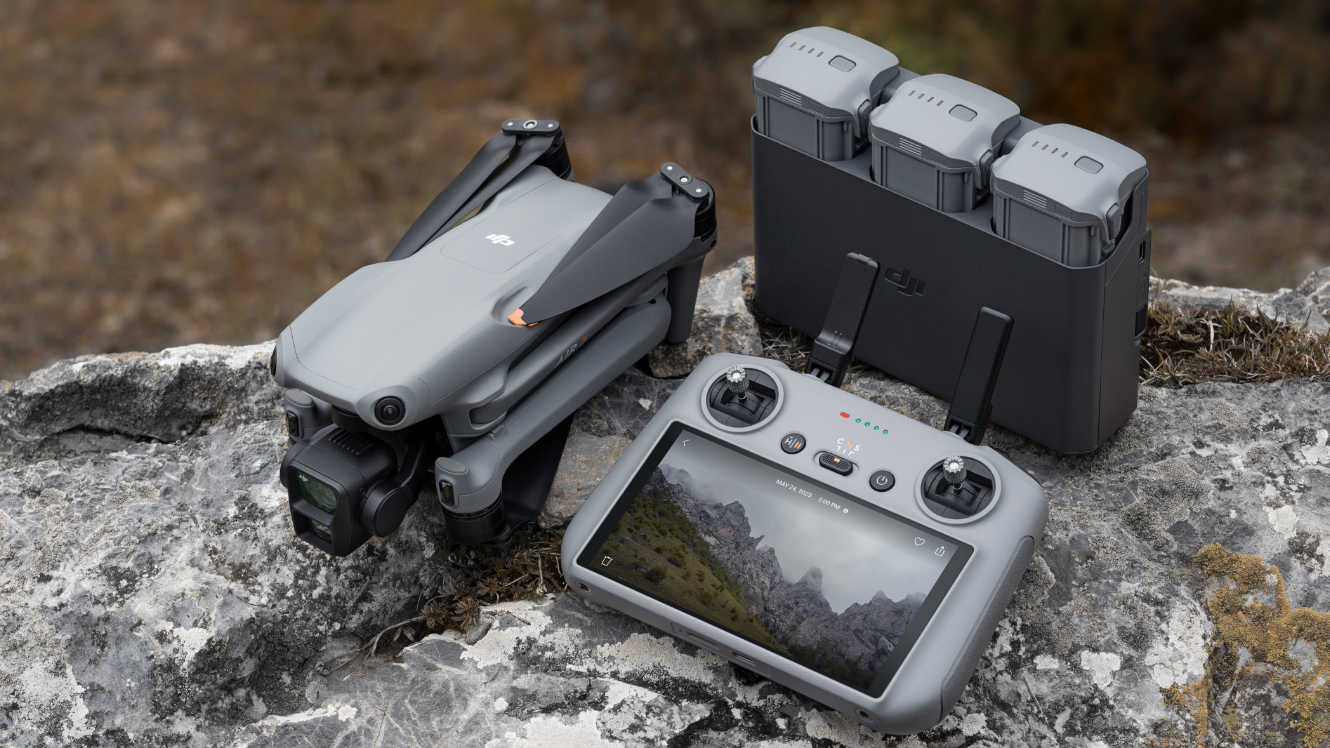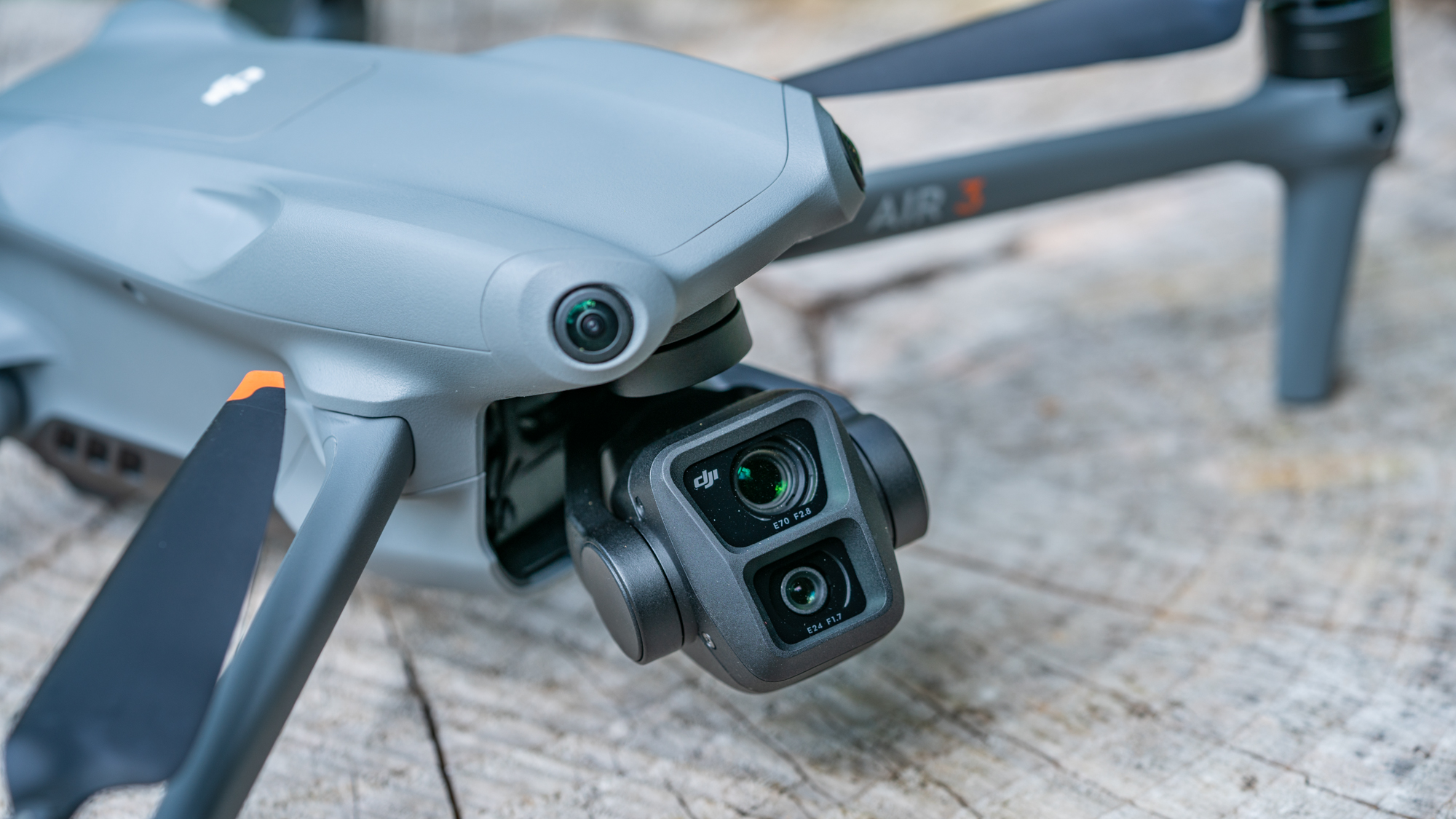DJI Air 3S vs DJI Air 3: worth the upgrade?
Here's what's new in DJI's latest drone for enthusiast aerial photographers

An iterative update of the Air 3, the dual-camera Air 3S comes with an improved main camera that utilizes a 24mm lens and larger 1-inch sensor.
Pros
- Superb battery life
- Easy and safe to fly, with improved safety features
- Great all-round camera performance
Cons
- Weight-class restrictions apply
- A minor upgrade on the original Air 3
Sitting between the Mini and Mavic series of drones, the Air 3 is DJI's best all-rounder drone with dual cameras sporting 1/1.3-inch sensors, plus omnidirectional object sensing.
Pros
- Dual cameras
- Excellent wind resistance
- Generous 46-minute flight time
- Excellent safety features
Cons
- C1 European rating
- Fixed aperture is bad news for ND filter users
- Large protruding camera likely to suffer in case of accidents
As its name suggest, the new DJI Air 3S is a minor upgrade over the DJI Air 3, but what exactly does the latest model bring to the table? Is the Air 3S worth the upgrade? Might it be worth saving a little of your hard-earned cash by opting for the older model instead, which will likely now come down further in price?
You're likely here because you have at least one of these questions, and we've got you covered. In this versus article, we address the key differences between these two enthusiast-level drones, as well as noting their common features. And whichever model you land on, you can be assured that you're choosing from the market leader's best all-rounder drone series.
Before we dive in, a note to newbies: if you're considering getting your first drone, you need to know that the Air 3 and Air 3S weigh 720g and 724g respectively, which puts them in the C1 category of drones. This category comes with regulations in most regions that you must adhere to before taking flight, and affect where you can fly, so do check what the rules are in your region. For example, in the UK you'll need a flyer ID and a certificate of competency, which require you to take a paid course and exam, and need to keep the drone a certain distance away from people and specified areas when flying.
If you simply want to get airborne as quickly and easily as possible, it's worth checking out one of the best beginner drones, all of which weigh under 250g and don't come with the same degree of flight restrictions and regulatory hoop jumping.

1. DJI Air 3S Vs DJI Air 3: cameras
- DJI Air 3S: 24mm main camera with 1-inch sensor, 3x telephoto camera with 1/1.3-inch sensor
- DJI Air 3: Both 24mm main camera and 3x telephoto camera use a 1/1.3-inch sensor
Both Air 3 series drones pack dual cameras that protrude from the body, with a main camera sporting a 24mm lens, plus a 3x telephoto zoom camera with 70mm lens. For the most part, they both have the same video recording specs: 4K up to 4x slow motion (120fps / 100fps), 4K HDR video up to 60fps, 2.7K vertical video up to 60fps, plus DJI's D-Log M and HLG color profiles with 10-bit video recording. However, there's one key upgrade in the Air 3S's main camera: a new sensor.
The main camera of the Air 3S utilizes a larger 1-inch sensor, whereas the Air 3 has a 1/1.3-inch sensor. Both telephoto cameras also use a 1/1.3-inch sensor. So what's the key benefit of a larger sensor? In short, better image quality in challenging light. You can expect more tonal detail in bright sunlight and especially in low light from the Air 3S's main camera. DJI says the Air 3S boasts up to 14-stops of dynamic range – that's a super-impressive level of detail for a sub $1,100 / £1,000 drone. The playing field is leveled when shooting with the 3x telephoto camera.
A slight surprise is that the Air 3S's maximum video bitrate is 130Mbps, whereas in the Air 3 it's 150Mbps, meaning the latter's is slightly less compressed. You'd be hard pressed to notice the difference, but it's worth noting for the eagle-eyed.
Sign up for breaking news, reviews, opinion, top tech deals, and more.

2. DJI Air 3S vs DJI Air 3: safety features
- DJI Air 3S: omnidirectional object sensing with LiDAR
- DJI Air 3: omnidirectional object sensing
Both Air 3 series drones offer impressive safety features, with omnidirectional object sensing that takes its information from six vision sensors: two at the front, two at the rear and two at the bottom, plus downward infrared time-of-flight (TOF) sensors. However, the Air 3S has a slight upgrade in being the first DJI drone with front-facing LiDAR.
Forward-facing LiDAR improves the performance of object sensing in the drone's flight path, especially in low light. Where the Air 3 might struggle to pick up objects at night, we can reasonably expect a better performance from the Air 3S.
If night flight doesn't take your fancy, you're unlikely to see a huge difference in safety performance, although the Air 3S is also equipped with 'next-gen' Smart Return to Home (RTH). DJI says its latest RTH is powered by "real-time vision positioning and map construction technologies, memorizing flight paths when adequate lighting is available, ensuring a safe return when taking off from locations even without a satellite signal".

3. DJI Air 3S vs DJI Air 3: photography modes
- DJI Air 3S: 50MP main camera, new panorama mode
- DJI Air 3: 48MP main camera
Besides the better performance of the Air 3S's larger main camera sensor, especially for low-light image quality (see above), there's not a huge amount to choose between the two drones. Maximum photo resolution of the main camera for each drone is pretty much the same, at 50MP for the Air 3S and 48MP for the Air 3, and 48MP for the both telephoto cameras.
DJI has, however, introduced a new 'Free panorama' mode, which is able to capture a series of images that can be stitched together into one much larger image, for what DJI suggests are frame-worthy prints. This mode is available for both main and telephoto cameras. We can see it being especially handy for the telephoto camera, making the most of its compressed depth of field and then expanding that closer view by stitching together multiple shots – a classic approach of wisened panoramic photographers.

4. DJI Air 3S vs DJI Air 3: price
- DJI Air 3S: Standard combo $1,099/ £959/ AU$1,699, Fly More Combo (from) $1,399/ £1,239/ AU$2,129
- DJI Air 3: Standard combo orginally $1,099/ £962/ AU$1,699, small discounts available now
The Air 3S starts life at $1,099 / £959 / AU$1,699 for the standard bundle with DJI's RC-N3 controller, while the Fly More Combo that includes two extra batteries and DJI's Charging Hub with power accumulation feature costs $1,399 / £1,239 / AU$2,129 with that same controller. Should you want the DJI RC 2 controller with built-in screen instead, the Fly More Combo costs $1,599 / £1,439 / AU$2,429.
That launch price is virtually identical to the launch price of the Air 3 a little over a year ago, so kudos to DJI for not hiking the price. Given that the Air 3 has been on the shelves since July 2023, and especially now the Air 3S has been launched, there are small discounts at leading retailers, up to 10% off, which are hardly savings worth writing about. However, I expect bigger discounts soon – it could be worth waiting until the Black Friday 2024 sales, during which time there are often decent DJI deals.

5. DJI Air 3S vs DJI Air 3: design and performance
- DJI Air 3S: C1 category, 724g, O4 transmission, 42GB built-in memory
- DJI Air 3: C1 category, 720g, O4 transmission, 8GB built-in memory
Design-wise the DJI Air 3S and Air 3 are near-identical, with essentially the same take-off weight of 724g and 720g respectively. This means they fall within the C1 category of drones, for which you likely need to obtain a flyer ID / registration and complete a paid competency course – check out the guidelines for your region.
Flight times are also essentially the same, at up to 45 minutes for the Air 3S and 46 minutes for the Air 3. They both use DJI's O4 transmission that supplies a low-latency FHD/60fps live image to DJI's RC 2 controller, plus a maximum transmission range of 20km (depending on your region and restrictions).
One minor upgrade in the Air 3S is a more generous 42GB of built-in memory compared to the 8GB built-in memory of the Air 3. That still won't get you a vast amount of 4K video footage, especially if you're shooting 10-bit, but it's a welcome backup to the microSD storage should you run into any issues. There's no real design reason to choose one drone over the other.

Which one should I buy?
If you already own the DJI Air 3, there's little reason to upgrade to the Air 3S, perhaps besides its main camera with 1-inch sensor, improved night flight safety features and handy 'Free panorama' photography mode. Otherwise, there's very little to choose between the two drones.
If you're looking for a first drone, or upgrading from DJI's Mini series of drones, or even if you're a pro Mavic series owner looking for a second drone, the Air 3S is an easy recommendation right now. At the time of writing, the pricing is so similar between the Air 3S and Air 3 that you might as well pick up the latest model. That picture could change as and when bigger discounts are applied to the Air 3, but until then the Air 3S with its iterative improvements is the enthusiast-level model to get.
You might also like

Tim is the Cameras editor at TechRadar. He has enjoyed more than 15 years in the photo video industry with most of those in the world of tech journalism. During his time as Deputy Technical Editor with Amateur Photographer, as a freelancer and consequently editor at Tech Radar, Tim has developed a deeply technical knowledge and practical experience with cameras, educating others through news, reviews and features. He’s also worked in video production for Studio 44 with clients including Canon, and volunteers his spare time to consult a non-profit, diverse stories team based in Nairobi. Tim is curious, a keen creative, avid footballer and runner, and moderate flat white drinker who has lived in Kenya and believes we have much to enjoy and learn from each other.